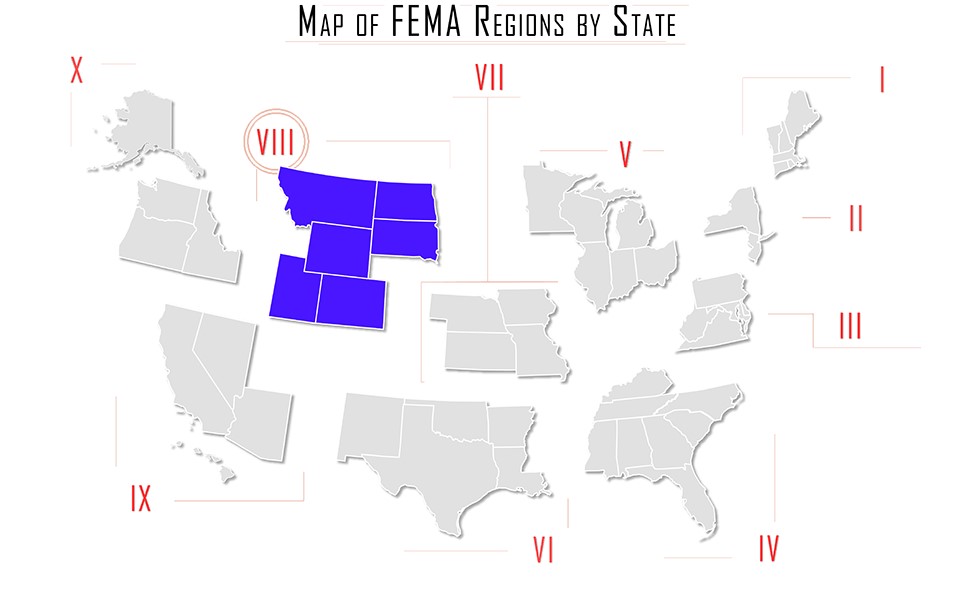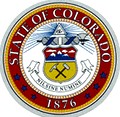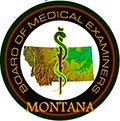.png)
At the Region is an ongoing feature that discusses the state-by-state training, certification and employment requirements of first responder departments across the nation. In this issue, At the Region looks at EMS requirements in FEMA Region VIII: Montana, Wyoming, North Dakota, South Dakota, Colorado and Utah.

Emergency Medical Technician certification levels result from a combination of national requirements and state by state regulations. All EMT training must meet minimum standards provided by the National Highway Traffic Safety Administration (NHTSA); this includes fundamentals in areas such as anatomy, medicine, and trauma, but states determine the final designations and requirements. An independent organization, the National Registry of Emergency Medical Technicians, also provides guidelines, and, although these are not mandatory, NREMT exams are used as the basis for certification at one or more levels in 45 states. Because of the variation in training, the NREMT national certification as an EMT does not equate to a license to practice, and transferring local certification depends on state by state reciprocity agreements.

Colorado
Certification of emergency medical care providers in Colorado is provided at the EMT, EMT-I, AEMT, and paramedic levels by the Department of Public Health and Environment. In order to certify, all applicants must register with NREMT and complete all written and practical examinations. In order to be eligible for testing, applicants must first complete an approved training course. Applicants must also pass a Colorado Bureau of Investigation fingerprint background investigation, and provide a fee of $17.50 for this service, or $39.50 if you have lived outside of Colorado in the previous 3 years. Once testing has been completed and all forms have been submitted, it will take four to six weeks to process the application and background check. Applicants must create an online OATH account.
Colorado EMTs must recertify every three years. The state renewal method requires EMS providers to:
• Gain the required amount of continuing education for their practice level.
• Demonstrate skills competency (your education program will verify)
• Log on to your OATH account and apply for renewal certification (all renewal applicants have an account)
• Specify a Colorado recognized EMS education program to verify your CE and skills within your OATH application
Continuing education may be obtained from various sources, but you must contact and choose one recognized program to verify your CE and perform a skills test. Use the links below to find a Colorado EMS education program authorized by the department to verify CE and skills
• Find a recognized EMS education program
• Map of Colorado EMS education programs
• Continuing education hour requirements for renewal applicants
• OATH certification portal tutorial
• Accepted CPR and ACLS cards
Reciprocity
Colorado does not offer reciprocity for state certification; however, NREMT registration is accepted. Applicants who are not NREMT certified must submit their state training information to NREMT for approval, complete all examinations and requirements, and obtain their registration prior to applying in Colorado. Qualified applicants must complete an application and pass a Colorado Bureau of Investigation and FBI fingerprint background check; this check costs $39.50, and applicants should submit the fee along with their fingerprint card. Fingerprint processing may take from 8 to 12 weeks, along with the application processing time of four to six weeks.

Montana
The Montana Board of Medical Examiners licenses emergency medical technicians at the Emergency Medical Responder, EMT, AEMT and paramedic levels. The Board requires that EMTs:
• Be 18 years of age or older
• Possess a high school diploma or equivalent
• Be registered with NREMT at the license level requested or higher
• Pay the following level based fees:
$30.00 – Emergency Medical Responder
o $50.00 – Emergency Medical Technician
o $70.00 – Advanced Emergency Medical Technician
o $100.00 – Paramedic
To apply for a license, the following documentation must be submitted for individuals who are applying for initial licensure or reapplying for licensure. • Proof of High School diploma or its equivalent, such as a college transcript, GED, etc
• Birth Certificate or other verifiable evidence of the applicant’s date of birth, ie. driver's license
• Current NREMT card or American Board of Pre-Hospital Care Board Certification or proof of state licensure equal to or greater than the level applying for
• RESULTS of a current self-query on the National Practitioners Databank (letter unopened)
The Following documentation must be submitted for individuals who have maintained continuous licensure in Montana as an EMT and are applying for another level. Current NREMT card or American Board of Pre-Hospital Care Board Certification equal to or greater than the level applying for. Qualified applicants must send proof that all requirements are met, along with an application, verification of licensure from every state in which the applicant has practiced when applicable, and the unopened results of a current self-query on the National Practitioners Data Bank. To request a self-query, applicants must input all required information on the Data Bank website, print the completed application, have the printed copy notarized, and mail it to the Data Bank for processing. There is an $4 fee associated with this process. Approval generally takes 10 days from the time the application is submitted.
To certify with NREMT, applicants must pass cognitive and psychomotor examinations conducted at an authorized test site. In order to be eligible for this testing, applicants must complete a state-approved EMT course that meets NREMT standards within two years taking the exam, provide verification from the Program Director that proficiency in EMT skills was demonstrated, possess CPR credentials for healthcare providers, and pass a state psychomotor exam. Applicants will also need to register on the NREMT website and pay a $70 application fee to obtain their Authorization to Test.
Reciprocity Montana uses NREMT standards for its EMT licensing, and offers reciprocity to out of state EMTs who are registered with NREMT. Out of state applicants must also meet all other Montana requirements for EMT licensing as provided above, and supply information as required, including verification of licensure from all other states in which the applicant has been licensed or certified.

North Dakota The North Dakota Department of Health Division of Emergency Medical Services and Trauma (DEMST) provides training, testing, certification and licensure of EMS personnel in the state. North Dakota EMTs must be both NREMT and State certified to practice, and all training, testing, certification, re-certification and licensure requirements for Basic Certification match NREMT standards. Persons under the age of 18 who meet all other requirements as defined by NREMT may be issued state certification prior to registering with NREMT at 18 years of age.
Basic requirements include:
• Completion of approximately 150 training hours from an approved program within two years of testing
• Completion of NREMT written and practical exams
• Verification by NREMT of CPR credential for health care providers and course proficiency
• Completion of a cognitive and psychomotor exam
• Completion of pre-testing registration process and payment of the $70 fee as defined by NREMT
A list of authorized courses and dates is available along with a training calendar. North Dakota is in the process of changing its administrative rules, visit the site for more information about these proposed changes. A public hearing will be held Thursday, February 22, 2018 in the Fort Totten Room, State Capitol to discuss the changes. Check back with the North Dakota Department of Health Division of Emergency Medical Services and Trauma (DEMST) after the public hearing to make sure you fully understand the changes. There is also a new re-certification process for those seeking recertification using the NCCP 2012 and 2016 models.
Reciprocity
Reciprocity is offered for those who have completed equivalent training standards and are/will be certified by NREMT. To obtain certification, EMTs must submit a letter of intent and all applicable forms to DEMST. If EMTs are currently NREMT certified, they must submit a copy of their current card and an EMS Registration form. Individuals who hold an EMT-Basic certification or license in another state but who are not NREMT registered will be required to submit a copy of their certification card, CPR card, and an EMS Registration. A license will be granted for one year or until the expiration date on the out-of-state certification; applicants must take the practical and written examination and become NREMT registered within this time period. Applicants who wish to certify at the Advanced or Paramedic levels must be registered with NREMT to receive reciprocal certification.

South Dakota
The South Dakota Department of Health, Office of Rural Health, EMS Program oversees the licensing of emergency medical technicians in the state at EMT, EMR, AEMT, and Paramedic levels. In order to become certified in South Dakota, EMTs must register with NREMT, and complete a psychomotor and cognitive exam. Once testing has been completed, applicants must submit proof of registration. AEMT and paramedic providers must be licensed annually through the South Dakota Board of Medical and Osteopathic Examiners; forms and procedures are available on their website. Several locations offer training for EMTs; a list of approved classes, dates and locations for EMTs, AEMTs, and paramedics may be found < ahref="http://doh.sd.gov/providers/ruralhealth/ems/Courses_Training.aspx">here. Also included are refresher and specialty courses that have been Department approved for credit.
Reciprocity
South Dakota offers reciprocity to EMTs who are registered with NREMT. In addition to submitting a form, applicants must send their National Registry Card, CPR card, and any current state cards for review. Applications will be processed in two to four weeks.

Utah
The Bureau of Emergency Medical Services and Preparedness under the Department of Health oversees the EMT certification process for the state. To obtain certification, applicants must register for a state approved training program through the online system. Available course information can be found here. Applicants need to create an account, provide the enrollment code assigned by their course coordinator, and complete an Application for Certification that includes background and criminal history information, course requirements, and contact information.
Prior to certification, EMR, EMT, and AEMR applicants must also:
• Successfully complete state-approved course
• Complete an online application
• Pay fees ($60 application fee and $67 background and fingerprint fee)
• Submit results of tuberculosis test
• Submit DACS fingerprints for criminal background check (one time requirement)
• Submit CPR Provider Card – CPR class must meet the AHA guidelines for Health Care Provider
• Successfully complete the state-approved National Registry cognitive and psychomotor exams
EMRs in Utah must recertify every four years by doing the following:
• Complete an online application
• Pay fees
• Submit DACS fingerprints for criminal background check (one time requirement)
• Submit results of tuberculosis test
• Submit CPR Provider Card – CPR class must meet the AHA guidelines for Health Care Provider
• Submit 52 hours CME as outlined in the Recertification Protocols for Emergency Medical Services Personnel
• Submit verification of demonstration of the psychomotor skills listed in the current National EMS Education Standards for this licensure level
The requirements for EMT are the same except that they must submit 98 hours CME as outlined in the Recertification Protocols for Emergency Medical Services Personnel.
For AEMTs to recertify, they must:
• Complete an online application • Pay fees
• Submit DACS fingerprints for criminal background check (one time requirement)
• Submit results of tuberculosis test
• Submit CPR Provider Card – CPR class must meet the AHA guidelines for Health Care Provider
• Submit Pediatric Education for Prehospital Professionals (PEPP), Pediatric Emergency Assessment, Recognition and Stabilization (PEARS), or equivalent
• Submit 108 hours CME as outlined in the Recertification Protocols for Emergency Medical Services Personnel
• Submit recommendation and verification of demonstrated proficiency in the psychomotor skills (listed in the current National EMS Education Standards) from a certified off-line medical director
Reciprocity
Reciprocity in Utah is offered to EMTs who have completed an equivalent training program out of state. Reciprocity applicants must:
• Complete application at https://emslicense.utah.gov
• Pay fees
• Submit DACS fingerprints for criminal background check (one time requirement)
• Submit current EMS license from another state or NREMT
• Submit CPR Provider card – CPR class must meet the AHA guidelines for Health Care Provider
• Submit Pediatric Education for Prehospital Professionals (PEPP) or Pediatric Advanced Life Support (PALS) (Advanced EMT and Paramedic only)
• Submit Advanced Cardiac Life Support card (Paramedic only)
• Submit 25 hours of CME completed within one year of application OR Submit proof of initial certification/licensure completed within one year of application
• If not NREMT certified, successfully complete the NREMT assessment exam corresponding to the level of license being sought

Wyoming
The Wyoming Office of Emergency Medical Services (OEMS) provides certification testing and requirements for pre-hospital care providers in the state. All EMTs must meet training requirements by completing a course that is Division approved, or accredited by Commission on Accreditation of Allied Health Education Programs (CAAHEP).
After training, applicants must:
• Complete an application
• Provide evidence of successful completion of a course of education appropriate for the category of licensure
• Be at least sixteen (16) years of age when applying for a license as an EMR or be at least eighteen (18) years of age when applying for a license for any level of EMT
• Successfully complete the Division Licensure Exam appropriate for the level of licensure or the equivalent exam administered by the National Registry of Emergency Medical Technicians unless the applicant qualifies for licensure under Section 5(c) of this chapter; and
• Not have been convicted of a criminal offense against a person, a felony, or an offense against morals, decency and family. Waivers may be granted.
• Verify whether the applicant has been the subject of limitation, suspension, or termination of their right to practice in a health care occupation or voluntarily surrendered a health care certification or license in any state or an agency authorizing the legal right to work
Reciprocity Wyoming does not offer automatic reciprocity for any program, including NREMT; however, lateral transfers will be offered state certification if they meet testing and training requirements. In addition to submitting all required information as outlined above, out of state applicants for certification must:
• Submit a copy of your current certification card, National Registry card if a member of the military, or certificate of completion of training if not yet certified
• Submit a copy of all course information: Basic Courses must meet the guidelines for the 1994 EMT-Basic National Standard curriculum; Intermediate Courses must meet 1985 or 1999 DOT EMT-Intermediate National Standard curriculum; Paramedic Courses must be Division approved (list available by request), or accredited through the Commission on Accreditation of Allied Health Education Programs (CAAHEP)
• Submit documentation of all Continuing Education Credits obtained within the past two years
Once this information has been received, applicants must pass the relevant Wyoming State examination and complete the affiliation/sponsor form as described in the general requirements.








